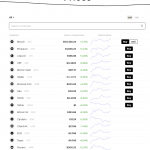On Thursday, Ameren Corporation and S&C Electric Company announced that they had successfully conducted a 24-hour islanding test at the recently deployed Ameren microgrid in Champaign, Illinois.
The test focused specifically on the 50-kW microgrid at the site, which powers an Ameren research facility. The complete microgrid includes 225 kW of renewable generation (PV solar and wind) and 250 kW / 500 kWh of battery energy storage.
The test began at 8 a.m. on Aug. 3, 2017, with the battery’s state of charge at 97 percent capacity. Once the battery was depleted to 90 percent capacity, solar and wind generation kicked in, simultaneously carrying the load and charging the battery. This pattern continued throughout the day, never letting the battery fall lower than 88 percent capacity. The microgrid functioned without any human interaction, automatically coordinating resources and ensuring power never faltered, according to the company.
The chart below shows when the battery was being discharged, and when renewable generation was utilized. Upon conclusion of the 24-hour test, the microgrid successfully moved back into grid-connected mode without any loss of power for end users.
“We have one of the few microgrids in the world that operates at utility-scale voltages and can seamlessly transition from grid-connected to islanded mode,” said Ron Pate, senior vice president, operations and technical services at Ameren Illinois.
During the test, the Ameren microgrid functioned on 100 percent renewable energy throughout the day. Many microgrids of this scale need to rely on rotating machines or generators, which prevent 100 percent penetration of renewable energy in these situations, said the company.
At the Ameren microgrid, when the generation exceeds the load, the excess powers the battery. With a rotating machine, the influx of generation would have caused the system to trip due to penetration limits, said S&C.
“When designing this microgrid, we were confident that the seamless transition and the ability to run solely on renewable generation would be two of the biggest features to this system,” said David Chiesa, senior director, Business Development, S&C.
“Microgrids are becoming more commonplace on the grid, and this test continues to prove how impactful they can be for energy users.”














